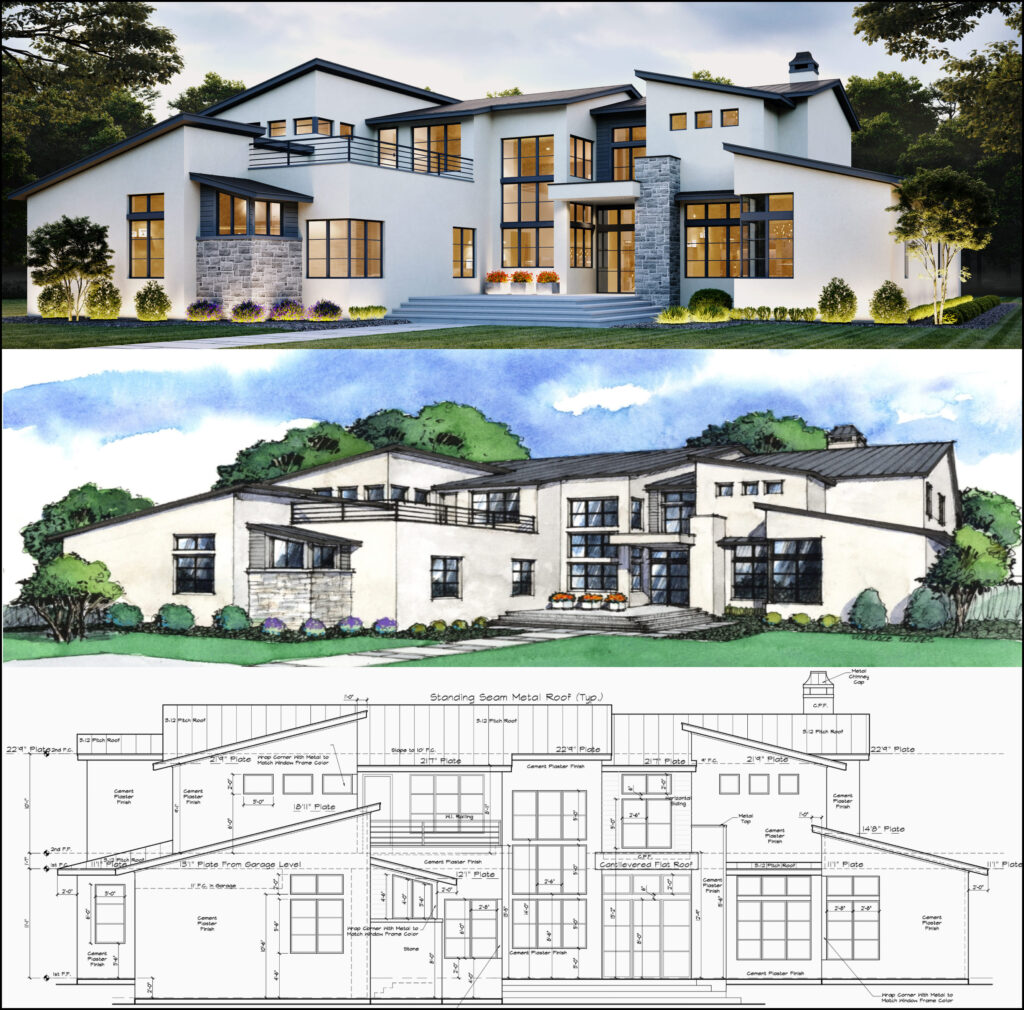A Detailed Summary of Building Styles and Their Influence on Modern City Planning and Advancement
Architectural designs have long offered as a mirror to the social worths and technical advancements of their time, playing a vital duty in forming modern-day city planning and development. From the majesty of Neoclassicism to the utilitarian approach of Brutalism, each design has actually introduced unique ideas that affect city looks and functionality.
Historical Overview of Building Designs
:max_bytes(150000):strip_icc()/Buildingdesigns-GettyImages-912482942-db55b3af711044a3a42ad1040c6711a9.jpg)
As societies transitioned with the Center Ages, Gothic architecture arised, characterized by its verticality and detailed describing, mirroring the spiritual desires of the era. The Renaissance noted a resurgence of classic ideals, combining art and architecture in ingenious ways that affected subsequent styles across Europe.

Today, architectural designs remain to develop, driven by globalization and sustainability issues, mirroring a dynamic interplay in between heritage and innovation. This historic introduction emphasizes the value of architecture as a mirror of social advancement and as a driver for metropolitan advancement.
Trick Architectural Styles Explained
The diversity of architectural styles reflects the myriad influences that shape our built atmosphere, each symbolizing unique qualities and social significances. Trick architectural designs include Timeless, Gothic, Baroque, Modernism, and Postmodernism, each standing for one-of-a-kind historical contexts and aesthetic viewpoints.
Classical style, rooted in ancient Greece and Rome, stresses balance, proportion, and using columns (cda architects). On the other hand, Gothic architecture, growing between Ages, is characterized by pointed arcs, ribbed vaults, and flying buttresses, creating an aerial top quality in basilicas. Baroque style, arising in the 17th century, is noted by splendour, intricate ornamentation, and a vibrant interaction of light and shadow
Modernism, which obtained energy in the early 20th century, focuses on feature over type, making use of brand-new materials like steel and glass to produce minimal structures. Postmodernism, reacting versus the austerity of Modernism, welcomes eclecticism and historic recommendation, typically including lively aspects and irony.

Impact on Urban Preparation
Fit the advancement of cities, building styles substantially influence urban preparation decisions. The selection of building design commonly dictates the aesthetic appeals, functionality, and total personality of city settings. For example, modernism, with its emphasis on minimalism and performance, encourages open areas and the integration of innovation, shaping city layouts that prioritize efficiency and accessibility. Alternatively, typical designs may highlight historic conservation, causing metropolitan designs that preserve cultural heritage and promote pedestrian-friendly atmospheres.
Furthermore, architectural styles can impact zoning regulations and land make use of policies. Urban organizers should take into consideration the prevailing architectural trends when developing areas, ensuring that new growths harmonize with existing structures. This consideration promotes natural metropolitan landscapes and visit boosts area identification.
The application of certain building styles can likewise affect socioeconomic aspects within a city. Premium contemporary layouts may bring in upscale residents and organizations, leading to gentrification, while extra affordable housing options might prioritize useful and lasting designs to fit diverse populations. cda architects. Eventually, the interaction between building designs and metropolitan planning develops dynamic cities that mirror both historical context and modern needs, shaping the lived experiences of their residents
Sustainability and Modern Design
Architectural styles play a critical duty in dealing with contemporary obstacles, specifically in the realm of sustainability. As urban locations increase and ecological concerns increase, contemporary architecture significantly accepts lasting layout principles that focus on power performance, resource conservation, and marginal ecological influence.
Contemporary architectural motions, such as biophilic design and green architecture, advocate for structures that harmonize with their environments, making use of all-natural products and promoting biodiversity. These designs usually include sustainable power resources, such as solar panels and wind generators, to minimize dependence on fossil gas and lower carbon impacts.
Furthermore, the integration of advanced technologies, such as wise structure systems, improves power monitoring, maximizing resource usage while making certain resident comfort. Cutting-edge water administration approaches, including rainwater harvesting and greywater recycling, further add to lasting metropolitan settings.
Notably, sustainability expands beyond environmental concerns; it includes social and economic measurements as well. By cultivating area health and advertising inclusivity, contemporary building designs line up with lasting growth goals. The development visit the website of architectural practices continues to form resistant cities that not only meet the requirements of the present yet likewise safeguard the future for generations to come.
Area Engagement in Layout
Area engagement in design works as a vital bridge between engineers and the populaces they offer, making sure that the built atmosphere reflects the requirements and goals of its users. This joint process welcomes area participants to add their understandings and choices, fostering a sense of possession and duty towards the rooms they inhabit.
Efficient area engagement employs various approaches, such as workshops, studies, and public online forums, to collect diverse perspectives. These approaches facilitate a two-way discussion, enabling engineers to recognize regional contexts while encouraging homeowners to articulate their problems and wishes. This inclusivity not just improves the style top quality yet also promotes social equity by addressing the one-of-a-kind obstacles faced by marginalized groups.
Furthermore, area involvement can cause cutting-edge solutions that might not next emerge in a conventional design process. By incorporating local understanding and cultural worths, designers can develop areas that reverberate more deeply with individuals, boosting functionality and sustainability. Eventually, prioritizing area interaction in style processes causes environments that support social communications, support well-being, and strengthen area ties, therefore playing a critical role fit modern-day city landscapes.
Final Thought
Building styles have actually exceptionally influenced modern city preparation and growth, reflecting progressing cultural and technological contexts. As cities proceed to grow and adjust, the continuous discussion between architectural heritage and modern-day style principles will remain essential in developing comprehensive, vivid areas that boost quality of life and promote social equity.